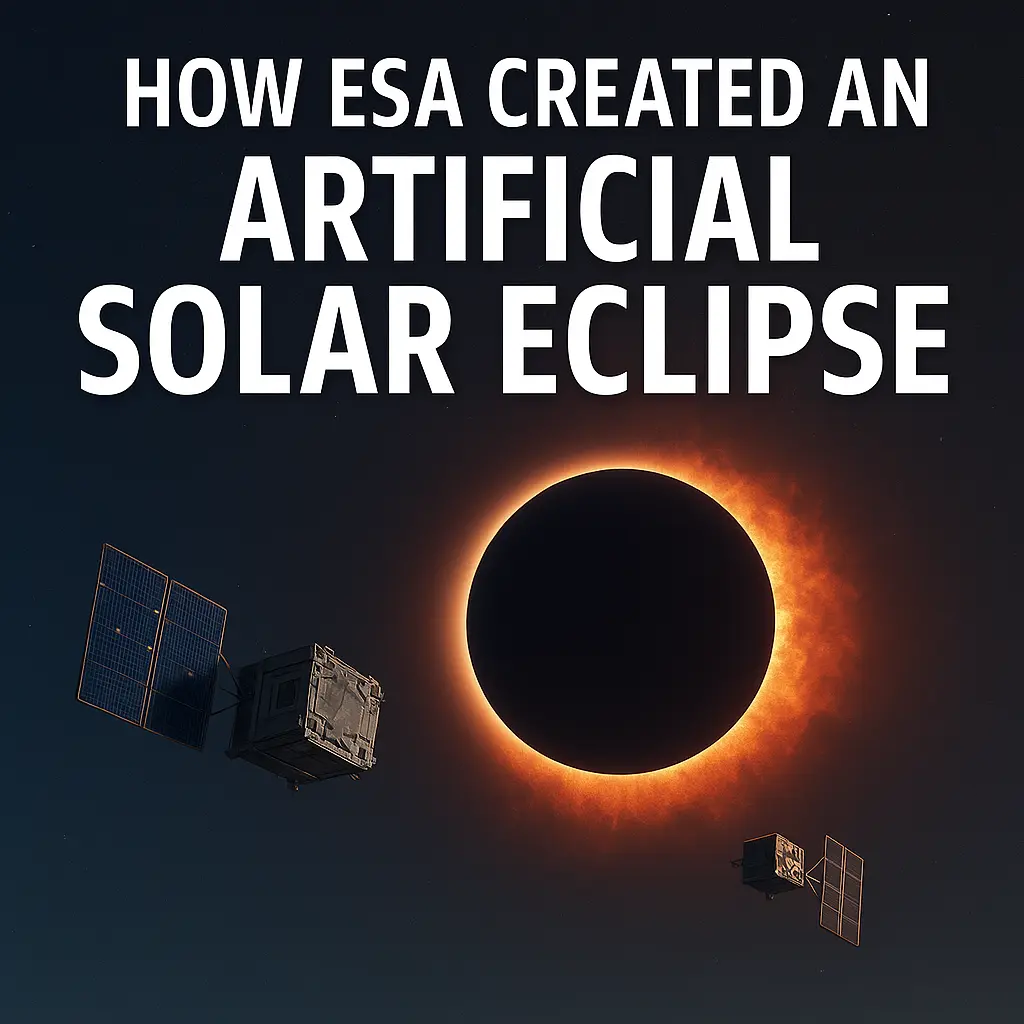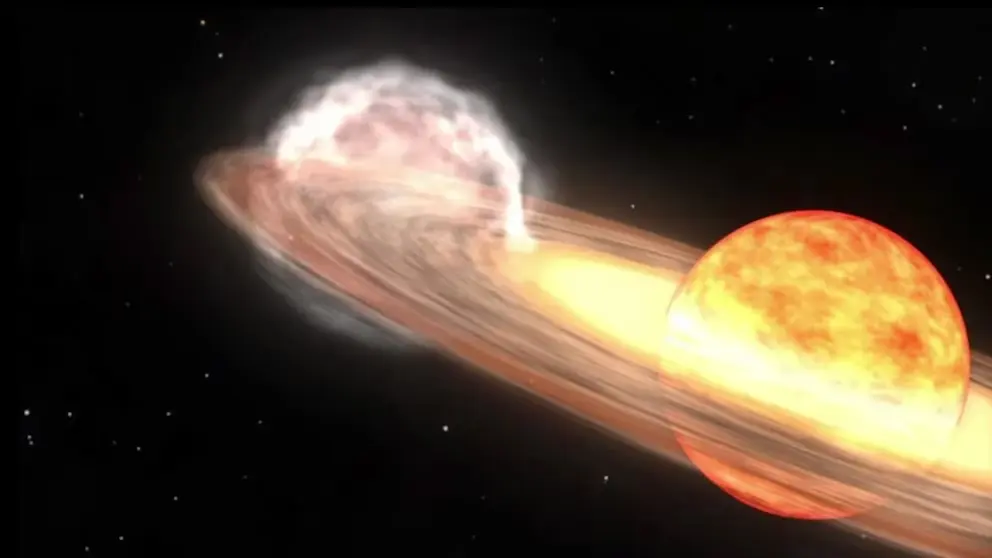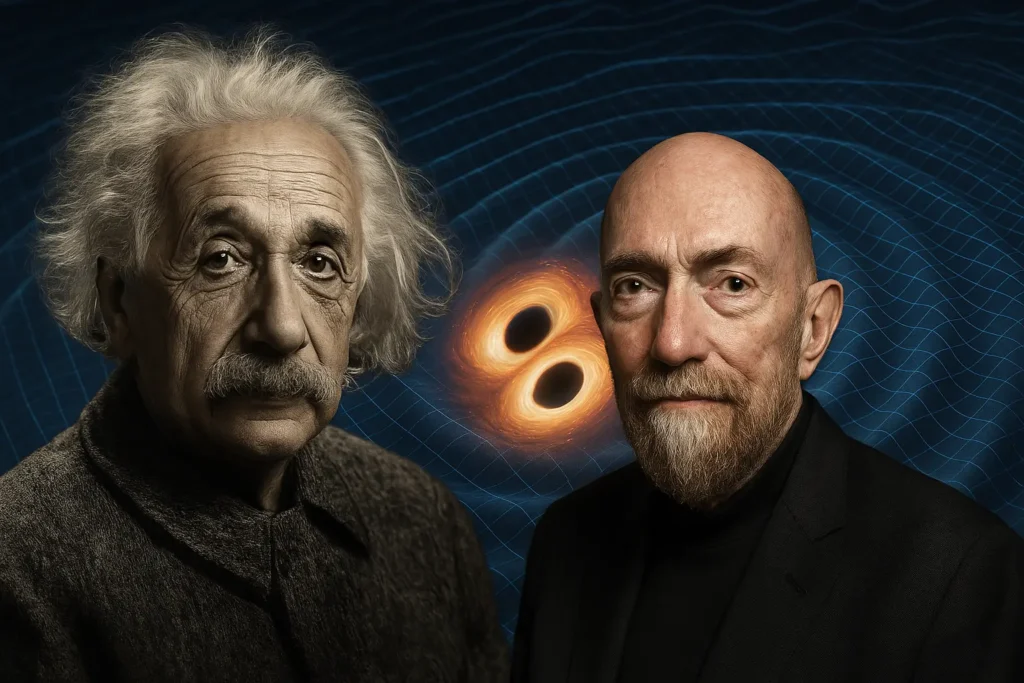In a landmark achievement for both aerospace engineering and solar science, the European Space Agency (ESA) has successfully created the world’s first artificial total solar eclipse in orbit. This milestone, realized through the Proba-3 mission, marks a dramatic leap in formation-flying satellite technology and opens a new era of continuous solar observation. At its core, Proba-3 is a pioneering mission that allows humanity to control an eclipse—something once left to nature and chance.
Reimagining the Eclipse: How Proba-3 Works
At the heart of the Proba-3 mission lies a remarkably simple yet technically profound concept: simulate a solar eclipse by using two satellites flying in extremely close formation. The two spacecraft—the Occulter and the Coronagraph—operate as a single, space-based coronagraph system. The Occulter carries a 1.4-meter disk to block the Sun’s intense light, casting a narrow shadow precisely onto the Coronagraph 150 meters behind, where the ASPIICS instrument captures images of the Sun’s elusive outer atmosphere, the corona.
Achieving this level of formation flying is no small feat. The spacecraft must maintain a positional accuracy down to a single millimetre—without continuous ground control. As ESA’s Director of Technology, Engineering and Quality, Dietmar Pilz, notes, “Many of the technologies which allowed Proba-3 to perform precise formation flying have been developed through ESA’s General Support Technology Programme (GSTP)… It is exciting to see these stunning images validate our technologies.”
Though still under commissioning, the system has already met its formation-flying precision benchmarks, paving the way for the ultimate goal: fully autonomous eclipse generation, with minimal human intervention.
The ASPIICS Instrument: A New Lens on the Sun
Developed under the leadership of the Centre Spatial de Liège in Belgium, the ASPIICS (Association of Spacecraft for Polarimetric and Imaging Investigation of the Corona of the Sun) instrument is at the forefront of the mission’s scientific capability. It can observe the solar corona much closer to the Sun’s surface than ever before—free from atmospheric interference and natural eclipse constraints.
Each coronal image is a composite built from three exposures, enabling researchers to detect fainter and more dynamic features in the corona. As Principal Investigator Andrei Zhukov explains, Proba-3’s “artificial eclipse” images rival those captured during rare natural solar eclipses—but with two key advantages: frequency and duration.
Whereas natural eclipses occur just once or twice a year and last only a few minutes, Proba-3 can produce an artificial eclipse every 19.6 hours, lasting up to six hours. This transforms what was once a fleeting opportunity into a routine, highly controlled scientific platform.
Beyond Imaging: Additional Instruments, Broader Insights
Proba-3 carries more than just a camera. Two additional instruments onboard expand the mission’s scientific range:
- DARA (Digital Absolute Radiometer) precisely measures the total solar irradiance, helping track how much solar energy reaches Earth—a key input for climate and space weather models.
- 3DEES (3D Energetic Electron Spectrometer) studies energetic particles within Earth’s radiation belts, informing models of space weather hazards that affect satellites and astronauts.
Unlocking the Secrets of the Corona and Space Weather
The mission’s primary objective is to illuminate one of solar science’s enduring puzzles: why the corona is more than a million degrees hotter than the Sun’s surface. The high-resolution, continuous data from ASPIICS, combined with DARA’s irradiance readings, promise to advance our understanding of the processes heating the corona and generating the solar wind—the constant stream of charged particles flowing from the Sun.
More critically, these observations are essential for studying coronal mass ejections (CMEs)—violent solar eruptions that can cause geomagnetic storms. As the May 2024 solar event demonstrated, CMEs can disrupt GPS, communications systems, and power grids, threatening modern infrastructure.
With Proba-3, scientists can now observe the corona continuously during CME buildup, helping improve space weather forecasting and early warning systems.
From Observation to Simulation: Feeding the Models
ESA’s Virtual Space Weather Modelling Centre (VSWMC) is already incorporating Proba-3 data to refine digital eclipse simulations. Tools like KU Leuven’s COCONUT model now have access to unprecedented visual detail down to the solar limb. According to ESA’s Jorge Amaya, this is the critical data needed to improve the fidelity of space weather forecasts: “Current coronagraphs are no match for Proba-3.”
These enhanced models will not only benefit scientists but also provide actionable insights for industries, governments, and space agencies seeking to mitigate space weather risks.
An International Effort with Global Impact
Led by ESA, Proba-3 is a showcase of international collaboration. The mission was orchestrated by Spain’s Sener Aerospace, with contributions from 29 companies across 14 countries, including GMV, Airbus Defence and Space, Redwire Space, and Spacebel. It launched aboard an Indian PSLV-XL rocket on 5 December 2024 from the Satish Dhawan Space Centre in Sriharikota.
All scientific operations are coordinated by the ASPIICS Science Operations Centre at the Royal Observatory of Belgium, ensuring researchers around the world can request observations and access the mission’s data.
A New Era in Solar Observation
Proba-3 is not just a technological triumph—it’s a scientific catalyst. By giving researchers the tools to observe and study the solar corona with a regularity and resolution never before possible, the mission is poised to redefine what we know about our star and its influence on Earth.
Its early success signals a transformative shift: from passively waiting on natural eclipses to engineering them at will, and from reactive space weather forecasting to proactive space environment modeling. Proba-3 isn’t just looking at the Sun—it’s showing us how to understand it better, predict its tantrums, and prepare our world for the space age ahead.



